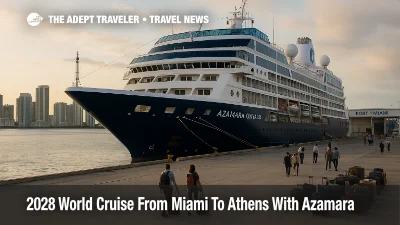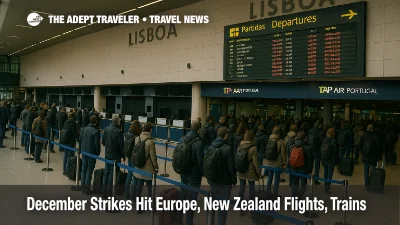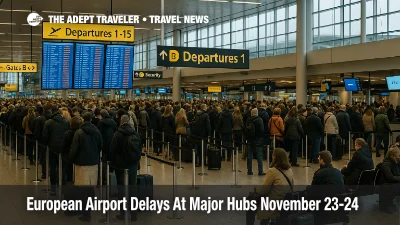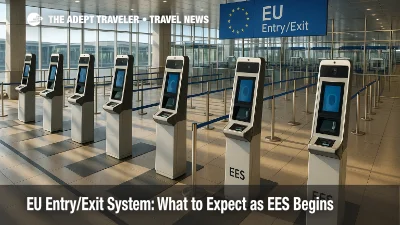European Union
The European Union, a vibrant tapestry of cultures, history, and natural beauty, stands as one of the most alluring destinations for travelers worldwide. When you travel to the European Union, you unlock an extraordinary blend of ancient landmarks, modern marvels, and culinary wonders. Envision wandering through the colonnades of the Parthenon in Greece, savoring the wines of Bordeaux in France, or cruising through the picturesque canals of Venice, Italy. The European Union offers an unparalleled range of experiences, from the lavender fields of Provence to the stunning fjords of Norway. Whether you're drawn to the architectural grandeur of Barcelona's Sagrada Familia or the historical depth of Berlin's museums, traveling within the European Union presents endless opportunities for discovery and adventure. Culinary enthusiasts can delight in the diverse gastronomic delights ranging from the hearty sausages and cheeses of Germany to the exquisite pastries of Austria. For nature lovers, the European Union brims with breathtaking landscapes including the Swiss Alps, the rolling hills of Tuscany, and the pristine beaches of Portugal's Algarve region. Cultural festivals, bustling markets, and world-class art galleries punctuate the calendar year, making every season the perfect time to travel to this dynamic union of nations. Seamless transportation networks, inclusive of high-speed trains and budget airlines, make it easier than ever to explore multiple countries in one trip, allowing you to experience the European Union in a way that’s tailor-made for every traveler. The European Union is not just a destination; it’s an adventure waiting to be discovered. So, pack your bags and travel to the European Union to embark on a journey that promises memories lasting a lifetime.
The History of European Union
The history of the European Union is a fascinating journey through time, brimming with significant events, milestones, and cultural amalgamations that make it a compelling destination for travelers. When you travel to the European Union, you're not merely visiting a place; you're stepping into a narrative that has been centuries in the making. The inception of the EU is rooted in the ashes of World War II, a period that marked an extraordinary shift in the geopolitical landscape. Born out of a desire for unity and peace after the devastation of the war, the European Union began as a coal and steel agreement between six founding nations: Belgium, France, Italy, Luxembourg, the Netherlands, and West Germany. This collaboration set the stage for an unprecedented era of cooperation and economic integration.
Exploring the history of the European Union provides unique insights into how these countries evolved from fractured states into a united bloc that stands as a global powerhouse today. The Treaty of Rome, signed in 1957, established the European Economic Community (EEC), further solidifying economic ties and paving the way for the free movement of goods, services, people, and capital. When you travel to European Union cities like Brussels or Strasbourg, you'll be able to visit sites where these critical agreements were signed, offering a tangible connection to the monumental decisions that shaped modern Europe. The continued expansion of the EU, including the significant Maastricht Treaty of 1993, which formally created the European Union, showcases a commitment to unity and shared prosperity that is as inspiring as it is historic.
Your travel to the European Union will bring you face-to-face with historical landmarks that bear witness to its storied past. Wander through the corridors of Brussels' European Parliament, where pivotal legislation affecting over 400 million citizens is crafted. Explore Berlin, where the fall of the Berlin Wall in 1989 signaled the end of Cold War divisions and heralded a new era of European integration. Each country within the EU offers a piece of the historical puzzle, from the ancient ruins of Rome to the modernist architecture of Barcelona, every region narrates a chapter of the EU's collective journey towards unity.
Moreover, traveling to the European Union also allows you to experience the cultural diversity and shared heritage that bind this unique federation of states. Whether it is through the culinary delights of Italy, the artistic masterpieces of France, or the traditional folklore of the Netherlands, each nation contributes to the rich tapestry that is the EU. Seasonal festivals, historical reenactments, and local traditions offer immersive experiences that deepen your understanding and appreciation of the EU's multifaceted history. There's no better time to travel to the European Union and immerse yourself in the story of this remarkable union, where every corner holds a piece of history waiting to be discovered.
The Culture of European Union
Embarking on a journey to the European Union is akin to stepping into a vibrant tapestry of cultures, traditions, and histories. The European Union is not just a geopolitical entity but a living mosaic of diverse peoples, each contributing to the rich cultural panorama that defines this unique region. From the cobblestone streets of Prague to the artistic avenues of Paris, and the sun-drenched piazzas of Rome, there is a palpable sense of history meeting modernity, creating an irresistible allure for travelers. When you travel to the European Union, you are greeted by a fusion of languages, cuisines, and customs, all harmoniously coexisting within its borders.
One of the most compelling reasons to travel to the European Union is the sheer diversity of experiences waiting to be discovered. This region boasts over two dozen countries, each with its own distinct identity yet contributing to a collective European essence. Picture yourself savoring a traditional Spanish tapa in Madrid, pairing it with a local wine as you enjoy flamenco in the background, or exploring the verdant landscapes of Ireland, enraptured by tales of Celtic folklore. The chance to immerse oneself in such varied cultural landscapes is a unique feature of traveling to the European Union.
The European Union is steeped in history, and this is reflected in its well-preserved monuments, architectural marvels, and historic sites that tell stories dating back centuries. Wander through the ancient ruins of the Colosseum in Rome, stand in awe beneath the Gothic spires of the Cologne Cathedral, or stroll across the iconic Charles Bridge in Prague. These historic landmarks are not mere relics of the past but living parts of the cities’ fabrics, surrounded by bustling modern life. Such experiences make the European Union an unparalleled destination for those interested in history and architecture.
Moreover, the people of the European Union are as welcoming as its landscapes are picturesque. Europeans are known for their hospitality and their pride in showcasing their unique cultural heritage. Whether it’s partaking in a festive German Christmas market, joining a Greek village celebration, or experiencing the conviviality of a British pub, the warmth and friendliness of the locals create lasting memories. The traditions, festivals, and communal events you encounter when you travel to the European Union provide invaluable insights into the local way of life, offering a genuine taste of Europe’s rich cultural diversity.
The Food of European Union
Travel to the European Union offers a gastronomic journey that is nothing short of extraordinary. From the sun-drenched vineyards of Southern France to the rustic trattorias of Italy, and from the bustling tapas bars of Spain to the regal dining rooms of Vienna, the culinary landscapes across the European Union are as diverse as its rich tapestry of cultures. Each country within the EU has its unique flair, transforming the act of eating into an exquisite celebration of flavors and traditions. Whether you are a food connoisseur or simply someone who appreciates good food, the European Union promises an unforgettable culinary experience that will tantalize your taste buds and leave you yearning for more.
Regional Specialties
One of the most thrilling aspects of travel to the European Union is the opportunity to delve into regional specialties. Picture yourself savoring a creamy risotto in Italy's Lombardy region, indulging in a rich bouillabaisse along the French Riviera, or enjoying a hearty goulash in the heart of Hungary. Each region boasts its specialty dishes, often relying on locally sourced ingredients that are prepared using time-honored techniques passed down through generations. When you travel to the European Union, you are not just eating; you are partaking in a cultural ritual that speaks volumes about the region's history, geography, and lifestyle.
World-Class Wine and Spirits
No discussion about the culinary delights of the European Union would be complete without mentioning its world-class wine and spirits. The vineyards of Bordeaux, the rolling hills of Tuscany, and the fertile valleys of the Douro River have given rise to some of the most celebrated wines in the world. Meanwhile, Belgian beers, Scotch whiskies, and the liqueurs of Central Europe offer an array of flavors that cater to every palate. Travel to the European Union to embark on wine-tasting tours, explore ancient cellars, and attend local festivals where you can sample the very best of what these regions have to offer. These experiences not only enhance your understanding of the local culture but also provide a deeper appreciation of the craftsmanship that goes into every bottle.
Contemporary Cuisine and Culinary Innovation
While the traditional culinary experiences are certainly noteworthy, the European Union is also at the forefront of contemporary cuisine and culinary innovation. The major cities across Europe are home to avant-garde restaurants and Michelin-starred establishments where chefs are constantly pushing the boundaries of what food can be. From molecular gastronomy in Spain to the New Nordic cuisine in Denmark, the European Union offers a playground for culinary creativity. If you travel to the European Union seeking modern and inventive dining experiences, you will find a plethora of options that challenge your palate and broaden your culinary horizons.
What to See and Do in European Union
Traveling to the European Union is an adventure that promises a blend of history, culture, gastronomy, and natural beauty. If you're planning a visit, here are ten detailed experiences you shouldn't miss. Each offers a unique glimpse into the rich tapestry that makes up the European Union.
1. Explore the Museums of Paris, France
No travel to the European Union is complete without a visit to Paris. The Parisian museums, including the Louvre and the Musée d'Orsay, showcase some of the most significant art collections in the world. The Louvre, home to the iconic Mona Lisa, spans centuries of art history from ancient civilizations to the 19th century. Meanwhile, Musée d'Orsay, housed in a former railway station, focuses on French art dating from 1848 to 1914.
2. Take a Gondola Ride in Venice, Italy
Venice, the floating city, offers an experience unlike any other with its network of canals. A gondola ride through the Grand Canal gives you an intimate view of the city's intricate architecture and its Renaissance and Gothic buildings. This is a quintessential activity for any travel to European Union, capturing the romantic allure of the region.
3. Witness the Northern Lights in Tromsø, Norway
For a natural spectacle, head north to Tromsø in Norway's Arctic Circle. The European Union’s latitude allows for a fantastic opportunity to witness the Aurora Borealis, or Northern Lights. Best seen from September to April, this phenomenon lights up the sky with dancing colors, making it a must-see for anyone traveling to the European Union.
4. Savor Tapas in Barcelona, Spain
Barcelona offers a culinary journey in the form of tapas, small plates of different Spanish foods. La Boqueria Market is an ideal place to start. Try local delights like patatas bravas, jamón ibérico, and pan con tomate. A tapas tour is a delicious way to explore one of the European Union's most vibrant cities.
5. Visit the European Parliament in Brussels, Belgium
For a dose of politics and history, the European Parliament in Brussels is a must-visit. Take a guided tour to understand the legislative processes and the importance of this institution within the European Union. The nearby Parlamentarium offers interactive exhibits, making it educational and engaging for all ages.
6. Experience Oktoberfest in Munich, Germany
Oktoberfest in Munich is the world’s largest beer festival and a significant cultural event within the European Union. Held annually from late September to the first weekend in October, it attracts millions of visitors. Enjoy traditional Bavarian beer, pretzels, and lively folk music in this iconic celebration of German culture.
7. Explore the Acropolis in Athens, Greece
The Acropolis of Athens stands as a testament to ancient Greek civilization. The Parthenon, the iconic structure at the top, offers panoramic views of the city. The Acropolis Museum nearby houses artifacts found in the archeological site, making it a comprehensive experience for history buffs traveling to the European Union.
8. Ski in the Alps, Chamonix, France
The European Union is home to some of the best ski resorts in the world, and Chamonix in France is a prime destination. Nestled at the base of Mont Blanc, Chamonix offers slopes for all skill levels, breathtaking scenery, and a variety of winter sports. It's a paradise for outdoor enthusiasts visiting the European Union.
9. Discover the Castles of Edinburgh, Scotland
Scotland, part of the European Union for travelers seeking historical grandeur, boasts majestic castles. Edinburgh Castle, towering over the city, offers a glimpse into the country’s turbulent past and spectacular views. The Holyrood Palace at the opposite end of the Royal Mile serves as the Scottish residence of the British monarch, enhancing the historical narrative.
10. Cruise the Danube River from Budapest, Hungary
A river cruise along the Danube offers a unique way to see multiple European Union countries. Starting from Budapest, you can travel through Austria, Slovakia, and Germany. Each stop delivers captivating landscapes, historical landmarks, and cultural riches. It’s a soothing yet immersive way to experience the heart of the European Union.
Traveling to the European Union is a rich and varied experience. Each city offers unique attractions and activities that showcase the region's diverse history, culture, and natural beauty. Whether you're exploring ancient ruins, tasting local cuisines, or witnessing natural wonders, the European Union has something for every traveler.
Why You Should Travel to European Union
Traveling to the European Union is an experience imbued with cultural richness, historical depth, and modern vibrancy. One of the foremost reasons travelers flock to the European Union is its breathtakingly diverse architectural heritage. Cities like Paris in France and Rome in Italy offer a window into centuries-old historical grandeur, featuring iconic landmarks like the Eiffel Tower and the Colosseum. Each member country in the European Union has its unique architectural marvels, from Gothic cathedrals to Baroque palaces, creating an unparalleled mosaic of human ingenuity. The well-preserved castles, ancient ruins, and historical museums scattered throughout the European Union further create a vivid narrative of the continent’s multifaceted past, making travel here a journey through time itself.
The European Union is a tapestry of cultures, languages, and traditions, making it a haven for travelers seeking to immerse themselves in vibrant and diverse ways of life. Whether it's savoring world-class cuisine in Michelin-starred restaurants or exploring the festive local markets filled with artisanal goods, travel to the European Union presents an opportunity to indulge in a multitude of sensory experiences. Each country within the European Union boasts its own unique culinary offerings, from the rich cheeses of France to the hearty sausages of Germany and the delectable tapas of Spain. Coupled with a wide range of annual festivals celebrating everything from classical music to modern art, the cultural depth and variety found in the European Union make every visit a unique and memorable adventure.
Furthermore, the European Union’s impressive connectivity and transportation infrastructure greatly enhance the travel experience. With a vast network of railways, highways, and budget-friendly airlines, it’s incredibly convenient to traverse the member countries. Travelers can easily hop from one iconic city to another within hours, enabling a multi-country European Union tour packed with diverse experiences. Additionally, the EU’s Schengen Area allows for hassle-free travel across most of the continent, eliminating the need for multiple visas and making border crossings seamless. This ease of movement is a significant draw for travelers who seek to maximize their European adventures without the bottlenecks of complex travel logistics.
Why You Must Travel to the European Union
Beyond its architectural splendor, cultural wealth, and seamless transportation, the European Union offers a host of intangible yet irresistible charms that make it an essential destination for any traveler. Imagine strolling through the cobblestone streets of Prague, breathing in the salty sea air along the coastlines of Portugal, or exploring the quaint villages nestled in the Swiss Alps. Each experience is steeped in a unique blend of old-world charm and modern flair. Whether you're a history buff, a gastronomy enthusiast, or someone who simply loves to explore new horizons, travel to the European Union promises to satisfy your wanderlust and fill your travel diaries with unforgettable memories. Don’t miss the chance to explore this captivating part of the world; the European Union is waiting to offer you an experience of a lifetime.
Tips & Tricks for Traveling in European Union
Traveling to the European Union can be an exhilarating experience, filled with diverse cultures, historical landmarks, and mouth-watering cuisines. To make sure your journey is smooth and stress-free, consider these essential tips and tricks. Whether you're visiting for the first time or returning for another adventure, these tips will help you make the most of your travel to the European Union.
1. Plan and Book in Advance
Planning ahead is crucial when you travel to European Union. High tourist seasons can lead to fully booked hotels and pricey airfares. Booking your flights, accommodations, and even some attractions in advance can save you both time and money. Use reputable booking platforms and always check for reviews and best rates.
2. Utilize Budget Airlines and Rail Passes
The European Union offers numerous budget airlines that can make travel between countries affordable. Additionally, consider investing in a European Rail Pass if you plan to visit multiple cities or countries. The convenience and cost-effectiveness of rail travel can enhance your overall experience while traveling across the European Union.
3. Learn Basic Local Phrases
Although English is widely spoken, especially in tourist areas, knowing a few key phrases in the local language can enhance your interactions. Simple words like “hello”, “please”, and “thank you” can go a long way in any European Union country. Locals appreciate the effort, which can lead to a more enriching travel experience.
4. Use Public Transportation
The public transportation systems across the European Union are highly efficient and economical. From metros to buses and trams, public transport is often the best way to navigate cities. Research the best travel card options available in the specific cities you'll be visiting to save money and travel hassle-free.
5. Embrace Local Cuisine
Each country within the European Union boasts unique, flavorful dishes. Don't miss the opportunity to taste local food and beverages. Visit local markets, street food stands, and traditional restaurants to fully immerse yourself in the local culinary experience.
6. Stay Aware of Currency and Payment Methods
The European Union includes countries that use different currencies. While many use the Euro, others, like Hungary and Poland, have their national currencies. Ensure you have local currency, a multi-currency card or an international credit card to avoid any payment hassles.
7. Travel Insurance is a Must
Travel insurance is a safeguard against unforeseen events such as medical emergencies, trip cancellations, or lost luggage. Considering the different regulations and high medical costs in various European Union countries, having comprehensive travel insurance can give you peace of mind.
8. Respect Local Customs
Each European Union country has its own set of customs and etiquette. Familiarize yourself with the local do's and don'ts to avoid any cultural faux pas. This respect will not only enhance your travel experience but also ensure that you leave a positive impression.
9. Keep Your Documents Safe
When traveling to the European Union, keep your passport, visas, and other important documents secure. It’s advisable to have both physical and electronic copies. Using a money belt or a secure travel wallet can provide extra peace of mind.
10. Be Prepared for Different Weather Conditions
The European Union encompasses various climates, from the Mediterranean warmth in the south to the colder Nordic temperatures in the north. Check the weather forecasts for the regions you plan to visit and pack accordingly. Layers are a good option for unpredictable weather.
By integrating these tips into your itinerary, your travel to European Union is bound to be more enjoyable and memorable. Taking the time to prepare and understand the nuances of traveling across this diverse and historic region will greatly enhance your overall experience. Enjoy every moment of your European Union adventure!
Other Places You Might Like
Paris, France - Travel enthusiasts who are captivated by the charm and romance of the European Union will find Paris, France, to be an ideal destination. The City of Light is renowned for its historical landmarks like the Eiffel Tower, Louvre Museum, and Notre-Dame Cathedral. Visitors can enjoy world-class dining, boutique shopping on the Champs-Élysées, and picturesque walks along the Seine River. Paris’s sophisticated ambiance and rich cultural heritage perfectly encapsulate the essence of travel to the European Union.
Rome, Italy - When traveling to the European Union, Rome, Italy, stands out as a must-visit city brimming with ancient history and art. The Colosseum, Roman Forum, and the Vatican Museums, which house the Sistine Chapel, are monumental sites that bring history to life. The Italian capital is also famous for its vibrant street life, savory cuisine, and timeless Italian fashion. By wandering through cobblestone streets of districts like Trastevere, travelers can experience a mix of old-world charm and modern vivacity, making Rome a quintessential European destination.
Barcelona, Spain - Nestled in Catalonia, Barcelona offers an extraordinary blend of Gothic architecture and modernist flair. Antoni Gaudí’s masterpieces such as Sagrada Familia and Park Güell offer unparalleled artistic experiences. Additionally, the city's Mediterranean beaches provide the perfect backdrop for relaxation. Barcelona's lively La Rambla street and Boqueria Market convey the bustling, vibrant culture that travelers to the European Union often seek.
Vienna, Austria - Vienna appeals to those who love travel to the European Union due to its classical music heritage and grand palaces. The Habsburg legacy is evident in landmarks like Schönbrunn Palace and the Hofburg. Vienna is also a paradise for classical music lovers, with venues such as the Vienna State Opera and Musikverein providing top-tier performances. The city's commitment to the arts makes it a haven for European Union aficionados seeking a blend of regal history and cultural enrichment.
Amsterdam, Netherlands - Often celebrated for its iconic canals and liberal atmosphere, Amsterdam is a city that enthusiasts of the European Union should not miss. From the artistic treasures of the Van Gogh Museum to the poignant history encapsulated in the Anne Frank House, Amsterdam offers a wide array of cultural attractions. The city’s cycling culture and flower markets add to its distinct and charming character, embodying the progressive spirit of the European Union.
Brussels, Belgium - As the de facto capital of the European Union, Brussels is a city steeped in European Union symbolism and activity. Landmarks such as the Atomium, the European Parliament, and the Grand Place are must-see attractions. The city's diverse culinary scene, known for chocolates, waffles, and beer, invites food lovers to indulge in authentic Belgian flavors. With its mix of historical and modern influences, Brussels perfectly represents the convergence of cultures that defines travel in the European Union.
Berlin, Germany - The German capital, Berlin, is a dynamic metropolis that seamlessly merges its tumultuous history with modern innovation. The remnants of the Berlin Wall, the Brandenburg Gate, and the Holocaust Memorial are crucial historical sites that speak volumes of Europe's past. Berlin also boasts a thriving arts and nightlife scene, with neighborhoods like Kreuzberg and Friedrichshain showcasing the city’s creativity. Berlin’s multifaceted appeal makes it a standout among European Union destinations.
Prague, Czech Republic - Prague’s fairy-tale-like ambiance, characterized by its enchanting castles, narrow streets, and historic bridges, makes it a cherished location for those who adore the European Union. The Prague Castle complex, Charles Bridge, and the Old Town Square with its Astronomical Clock are just the beginning of what the city has to offer. The city’s rich history, coupled with its affordable cost of living compared to other European capitals, attracts visitors seeking authentic European experiences.
Copenhagen, Denmark - Known for its high quality of life and progressive values, Copenhagen is a city that reflects the ideals upheld by the European Union. The iconic Little Mermaid statue, Tivoli Gardens amusement park, and the modern waterfront development, Nyhavn, are pivotal attractions. With a strong focus on sustainability, cycling culture, and design, Copenhagen is a modern utopia that offers visitors a glimpse into the future of urban living in Europe.
Athens, Greece - For those passionate about ancient history and culture, travel to Athens is indispensable when exploring the European Union. The cradle of Western civilization, Athens is home to the magnificent Acropolis, Parthenon, and numerous ancient ruins that tell the story of the beginnings of European culture. Alongside its historical significance, Athens has a lively contemporary scene with bustling markets, vibrant nightlife, and delectable Greek cuisine.
For travel enthusiasts captivated by the European Union, each of these cities offers unique and enriching experiences. From the historic streets of Rome and Athens to the modern marvels of Berlin and Copenhagen, these destinations embody the diverse cultural, historical, and social fabric that makes travel to the European Union so compelling.
Schengen EES Biometric Queues At Airports And Ports Rise

EU EES Passport Control Queues, January 9 Ramp

Schengen EES Border Delays At Airports Into 2026

Europe Air Traffic Control Delays Worsen, Add Buffers

Europe 2025 Travel Rules Tighten Borders And Costs

2028 World Cruise From Miami To Athens With Azamara

New Melbourne Doha Flights Expand Europe Options

December Strikes Hit Europe, New Zealand Flights, Trains

Europe Rail Pass Sale Offers 25 Percent Off Global Passes

European Airport Delays At Major Hubs November 23-24

ALG Vacations Black Friday Early Access Through Nov 25

Global Guardian Flags Geopolitics as Top Travel Risk

EU Entry/Exit System: Week one winners and losers

Contiki will cover first-time U.S. passport costs

EU Entry/Exit System: What travelers should expect as EES begins

EU Entry/Exit System begins October 12 with phased rollout

EU entry/exit system starts October 12: what to expect

U.S. warns Europe against capping transatlantic flights

Contiki drops prices on 2026 Europe tours, adds three trips

European Air Travel Update, Cyberattack and CPH Drones

European Heat Wave Intensifies, Travel Faces Disruptions

EU Entry/Exit System to End Passport Stamps This Fall

Europe Flight Cancellations: Storms Scrap 50+ Flights at Four Hubs

Europe Airport Walkouts Peak: July 27-28 Disruptions

EU Entry Exit System Starts Oct. 12; ETIAS Delayed to 2026

